April, 2012

Old stories told in a new way
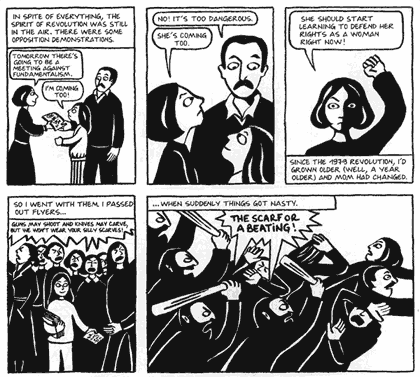
A lot of comic books are about superheroes or funny talking animals. There's nothing wrong with that - researchers have proven that reading such books is every bit as educational as reading books without pictures. But, in the past few decades, a new sort of comic book has emerged. These comics don't tell made-up stories: they contain real-life history, retold through imaginative drawings.
One of the best known of these historical comic books is "Persepolis" (above), which is set during the Iranian Revolution of 1979. This was a violent time when the Shah of Iran was overthrown by his people - only to be replaced by an even worse government. The book's a memoir by Marjane Satrapi, which means that she wrote it based on memories of her own life experiences. She was just a little girl in Tehran, Iran's capital city, when the revolution broke out.
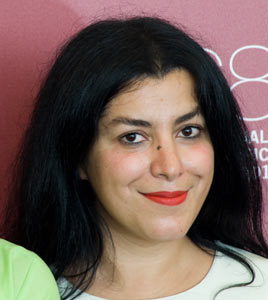
When reporters ask Satrapi why she chose to tell her life story through pictures, she replies, "I didn't have any other way. My brain functions with images. Just the words is not enough." In fact, the illustrations make the story much stronger, because they allow us to see things more clearly through her eyes. They make a tragic event even more horrifying, and a tender moment even more moving.
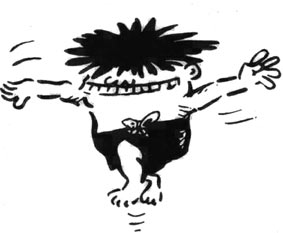
But, comics aren't just good at making people laugh and cry. They're also really useful tools for teaching. The brain is able to absorb far more information if it's conveyed through both words and images, rather than through words alone.
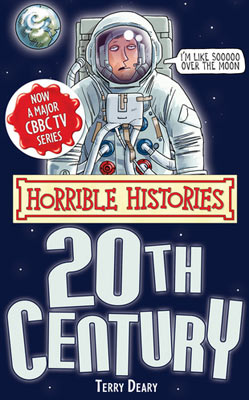
Consider the case of the Horrible Histories series of books by British author Terry Deary. These books talk about different periods of history, from the Stone Age to the 20th century, but they're far from boring. Kids say they love them because they're packed with silly jokes and weird, disgusting details about the past. These jokes and facts wouldn't be half as effective if they didn't come with illustrations on every page, mostly created by artist Martin Brown. After all, a story about a king's head getting chopped off becomes much more thrilling when a picture is involved.
But, perhaps the most remarkable example of a historical comic book is The Cartoon History of the Universe, by Larry Gonick from the United States. The five books in the series cover a huge scope of time: from the birth of the universe to the ongoing American war in Iraq. The project took 30 years and 1,450 pages to complete.
When asked why he chose to write about world history, Gonick starts talking about how bad most textbooks are. He says they talk about historical figures, as if they were zombies without emotions or personalities. "It's so hard to sympathise with them, to really feel all the passion, thought, conviction, bravery, fear, confusion and uncertainty that they experienced," he says. Through comics, he brings back the drama of history, as well as its tension and ridiculousness – all sensations which are present in every human life. In short, he puts life back into history, and that's what makes it so fun to read.
You might not have lived through a revolution like Marjane Satrapi. However, like Lat, you probably have some interesting childhood memories which you might like to share with your friends. You might even have a favourite story from history that you'd like more people to know about. Why not pick up a pen and paper, and start drawing and writing? You, too, could be a historical comic book artist.
Additional books
Here are a few more historical comic books you should know about:
Buddha
Japanese cartoonist Osamu Tezuka is most famous for creating the character Astro Boy. However, he's also written an award-winning 14-volume comic series about the life of the Buddha (563-483 BCE). The series describes the Buddha's birth as a prince in Nepal, his enlightenment, his miracles, and finally his death at the age of 80. Don't rely on this as a history book, though – some of the story is made up by the author.
Maus
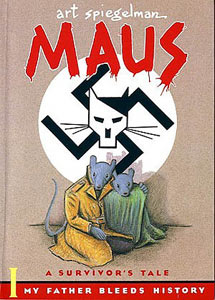
The world's most famous comic memoir is also one of the weirdest. Art Spiegelman wrote Maus to record the memories of his father, a Jew who was imprisoned in a Nazi concentration camp during World War Two (1939-1945). What's odd about it is that he drew all the Jews with the faces of mice and all the Nazis with the faces of cats. This makes the entire story look like a twisted fairy tale, or perhaps a nightmare.
Shenzhen
In 1997, the Canadian animator Guy Delisle was sent to work for three months in Shenzhen, China. In this absorbing memoir, he shows us how the city looked and what it felt like to be the one of the few Westerners working there. Although it describes recent events, it counts as a historical novel because things have changed so much in the last decade – now Shenzhen is a bustling city full of people from around the world.
One of the best known of these historical comic books is "Persepolis" (above), which is set during the Iranian Revolution of 1979. This was a violent time when the Shah of Iran was overthrown by his people - only to be replaced by an even worse government. The book's a memoir by Marjane Satrapi, which means that she wrote it based on memories of her own life experiences. She was just a little girl in Tehran, Iran's capital city, when the revolution broke out.

Ms. Marjane Satrapi
In the book, she describes many terrible things she witnessed, like the murders of protesters, and abuses against innocent citizens by the police. But, she also recalls many moments of humour and tenderness. For example, she and her schoolmates would sneak out to buy American rock-and-roll cassette tapes, which had been banned by the new government.
When reporters ask Satrapi why she chose to tell her life story through pictures, she replies, "I didn't have any other way. My brain functions with images. Just the words is not enough." In fact, the illustrations make the story much stronger, because they allow us to see things more clearly through her eyes. They make a tragic event even more horrifying, and a tender moment even more moving.

The Kampung Boy by Lat
Not all comic book memoirs are about conflict. Just look at The Kampung Boy, by the comic artist Lat. In this book, he shares with us what it was like to grow up in a Malaysian village in the 1950s. His illustrations reveal all the details of kampung life: the plants, the costumes and the traditional ceremonies and games. There's loads of comedy as well - readers laugh out loud when they see the pranks the kids play on the grown-ups. The book is so beloved that Lat has been called "Malaysia’s favourite son".
But, comics aren't just good at making people laugh and cry. They're also really useful tools for teaching. The brain is able to absorb far more information if it's conveyed through both words and images, rather than through words alone.

But, perhaps the most remarkable example of a historical comic book is The Cartoon History of the Universe, by Larry Gonick from the United States. The five books in the series cover a huge scope of time: from the birth of the universe to the ongoing American war in Iraq. The project took 30 years and 1,450 pages to complete.
When asked why he chose to write about world history, Gonick starts talking about how bad most textbooks are. He says they talk about historical figures, as if they were zombies without emotions or personalities. "It's so hard to sympathise with them, to really feel all the passion, thought, conviction, bravery, fear, confusion and uncertainty that they experienced," he says. Through comics, he brings back the drama of history, as well as its tension and ridiculousness – all sensations which are present in every human life. In short, he puts life back into history, and that's what makes it so fun to read.
You might not have lived through a revolution like Marjane Satrapi. However, like Lat, you probably have some interesting childhood memories which you might like to share with your friends. You might even have a favourite story from history that you'd like more people to know about. Why not pick up a pen and paper, and start drawing and writing? You, too, could be a historical comic book artist.
Additional books
Here are a few more historical comic books you should know about:
Buddha
Japanese cartoonist Osamu Tezuka is most famous for creating the character Astro Boy. However, he's also written an award-winning 14-volume comic series about the life of the Buddha (563-483 BCE). The series describes the Buddha's birth as a prince in Nepal, his enlightenment, his miracles, and finally his death at the age of 80. Don't rely on this as a history book, though – some of the story is made up by the author.
Maus

Shenzhen
In 1997, the Canadian animator Guy Delisle was sent to work for three months in Shenzhen, China. In this absorbing memoir, he shows us how the city looked and what it felt like to be the one of the few Westerners working there. Although it describes recent events, it counts as a historical novel because things have changed so much in the last decade – now Shenzhen is a bustling city full of people from around the world.